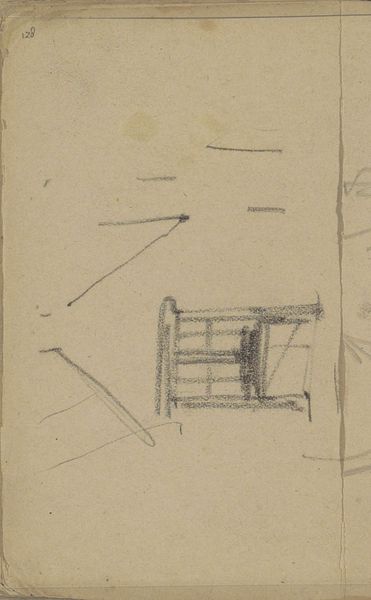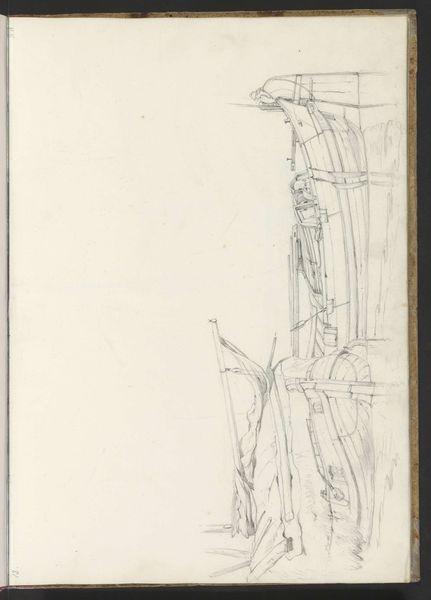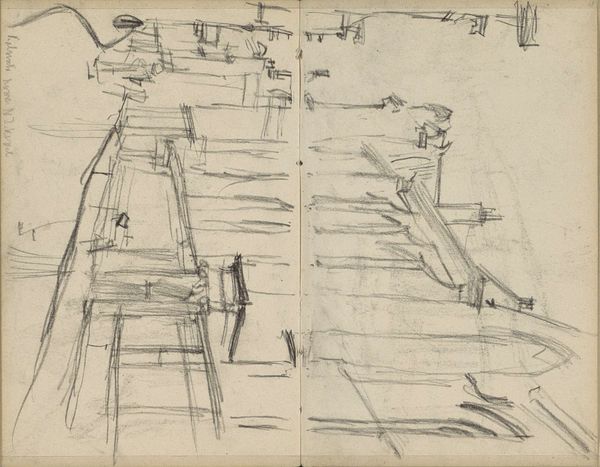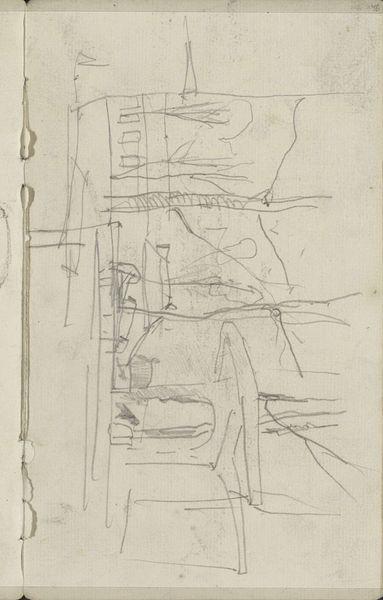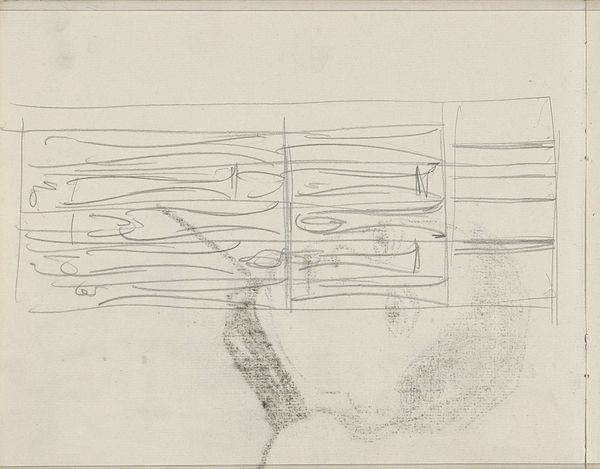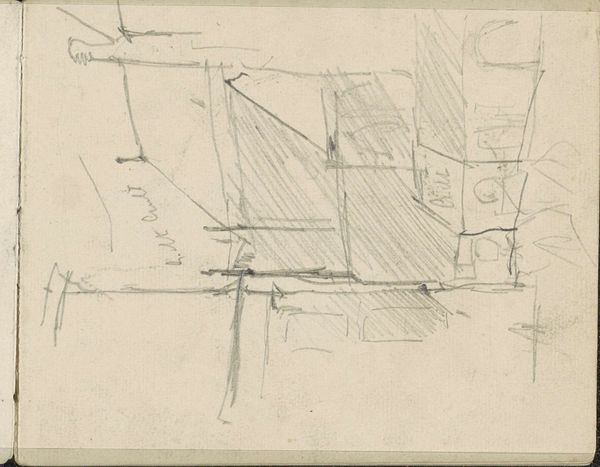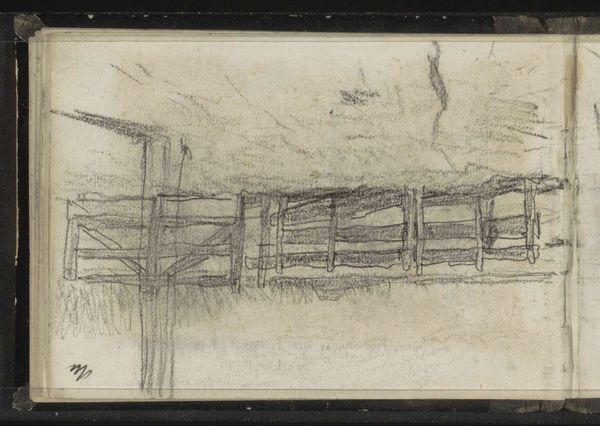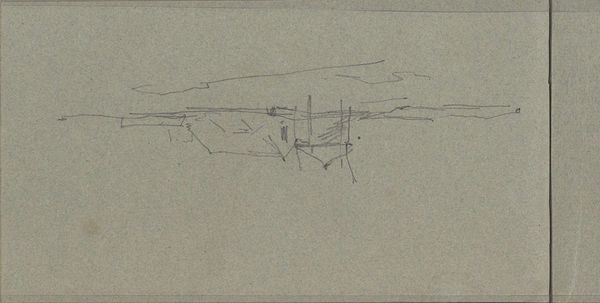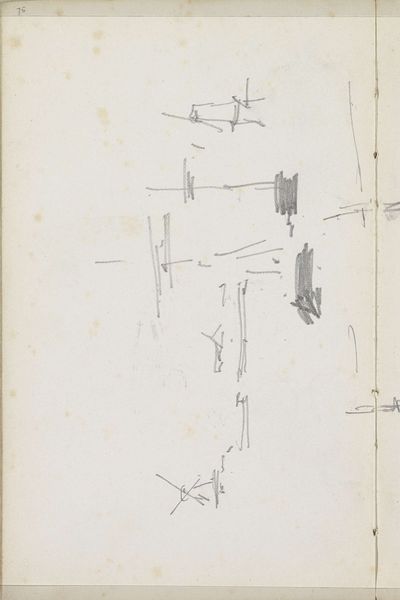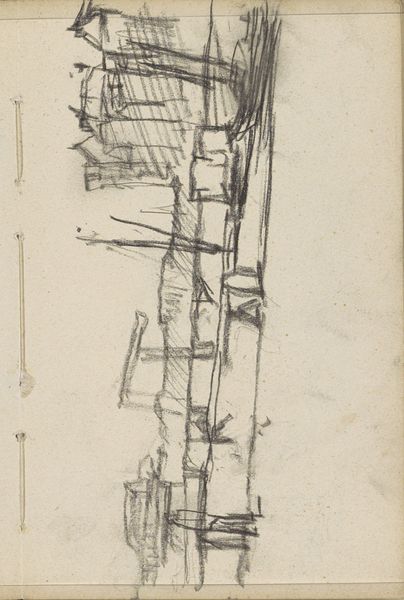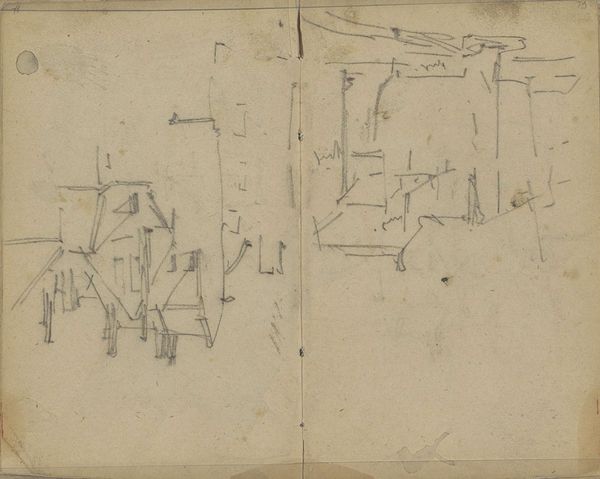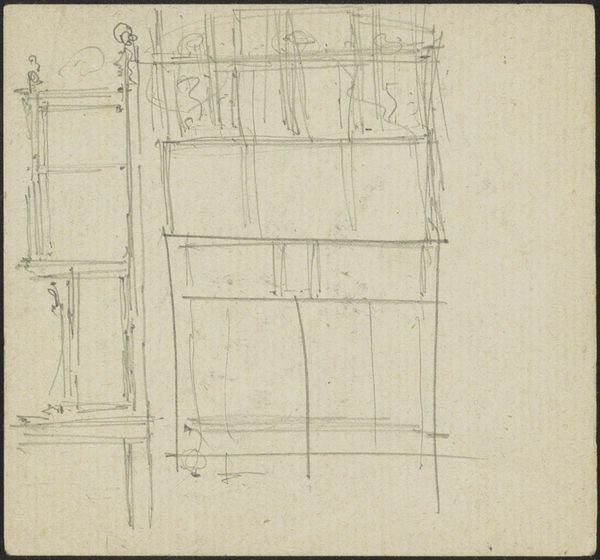
drawing, pencil
#
drawing
#
amateur sketch
#
impressionism
#
incomplete sketchy
#
hand drawn type
#
landscape
#
personal sketchbook
#
idea generation sketch
#
sketchwork
#
pen-ink sketch
#
pencil
#
sketchbook drawing
#
cityscape
#
sketchbook art
#
initial sketch
Copyright: Rijks Museum: Open Domain
Curator: This sketch, titled "Gezicht op de Nieuwe Kerk te Amsterdam," offers a glimpse into the working methods of George Hendrik Breitner. Executed around 1888, it's a study of the New Church rendered in pencil. What are your initial impressions? Editor: It strikes me as incredibly fragile, almost ephemeral. The delicate lines, the lack of any solid form… it feels more like a memory than a concrete depiction. Curator: That's perceptive. Breitner's Amsterdam period, particularly the late 1880s, was marked by his interest in capturing fleeting moments of urban life, often exploring the harsh realities faced by the working class and the social anxieties of a rapidly changing city. The incompleteness perhaps reflects a society in flux. Editor: The way he uses line is quite remarkable. There's a definite rhythm established despite the apparent looseness. Look how the horizontal lines defining the buildings pull your eye across, broken only by the scaffolding. Curator: Precisely. And it’s interesting to consider Breitner's engagement with photography during this time. He used photos as source material for paintings, yet this drawing suggests an immediacy, a direct engagement with the subject, distinct from the mediated experience of photography. The quick sketch holds both careful observation of perspective alongside an attention to documenting work as labor, framing its context for a future painting perhaps? Editor: Perhaps it’s in its incompleteness. There's an undeniable energy in the sketch, like catching a visual idea on the fly. The perspective, although simplified, grounds the airy, unfinished feel in something real. There's more structure to his method here than you find in, say, Impressionistic paintings of the period. Curator: True. And it’s useful for understanding him not as an isolated figure, but within the network of social upheaval in late 19th century Netherlands that saw increased class stratification and shifts in labor practice. His work engages both representation and critical inquiry. Editor: I find that consideration quite insightful; this sketch, beyond just subject or theme, demonstrates the ways that a new artistic language came to define the moment it was depicting. Curator: Ultimately, "Gezicht op de Nieuwe Kerk te Amsterdam" prompts us to think about what constitutes a ‘finished’ work of art and how even a preliminary sketch can offer profound insights into an artist’s process and the world they inhabited. Editor: Agreed. It’s a reminder that art's power often lies in its ability to capture the transient, to distill essence from fleeting impressions, and provide an idea.
Comments
No comments
Be the first to comment and join the conversation on the ultimate creative platform.

